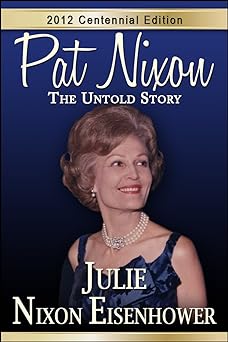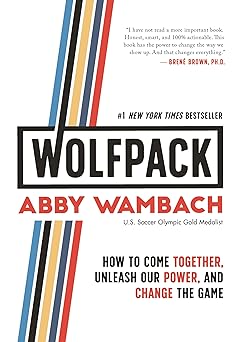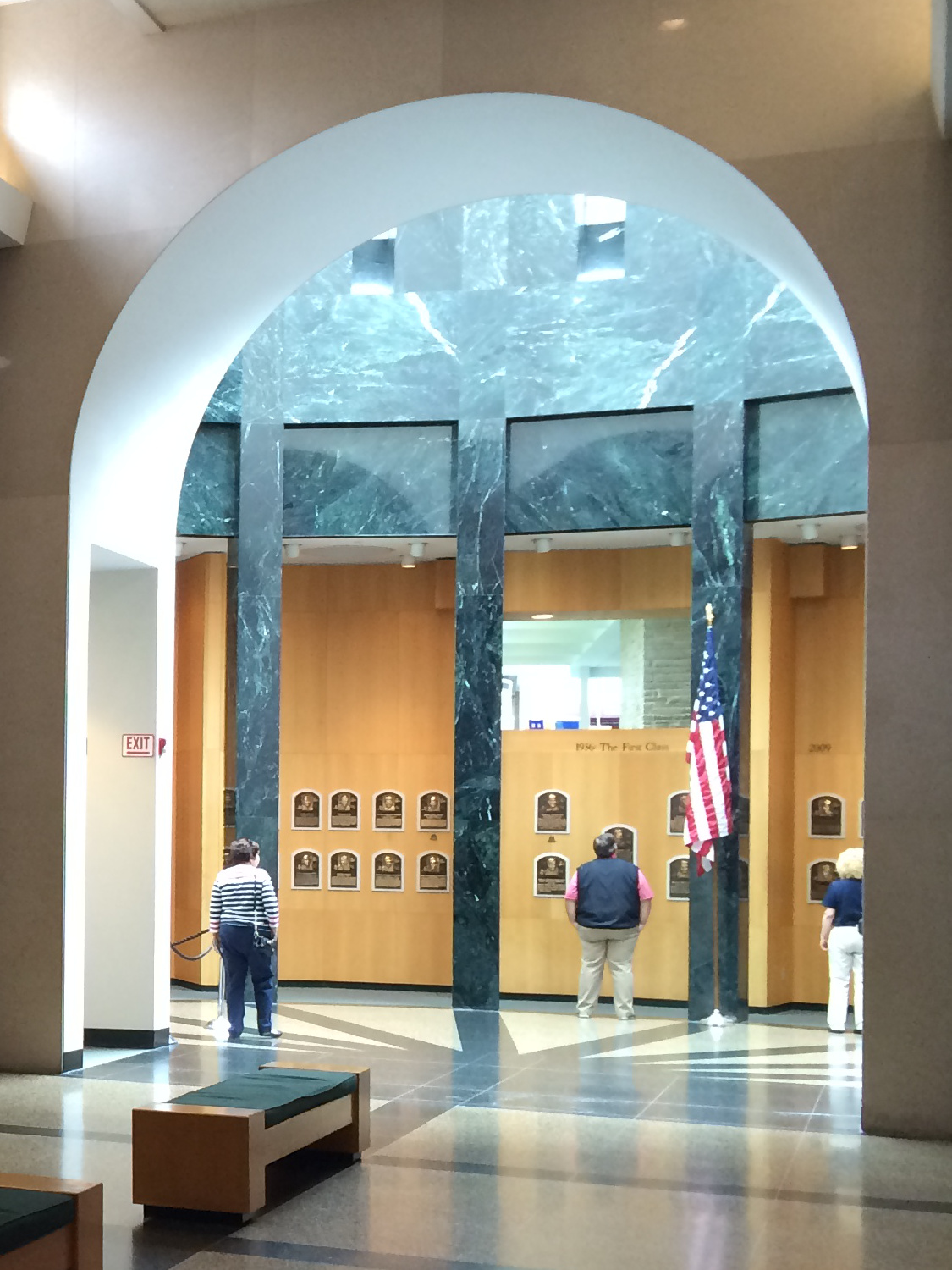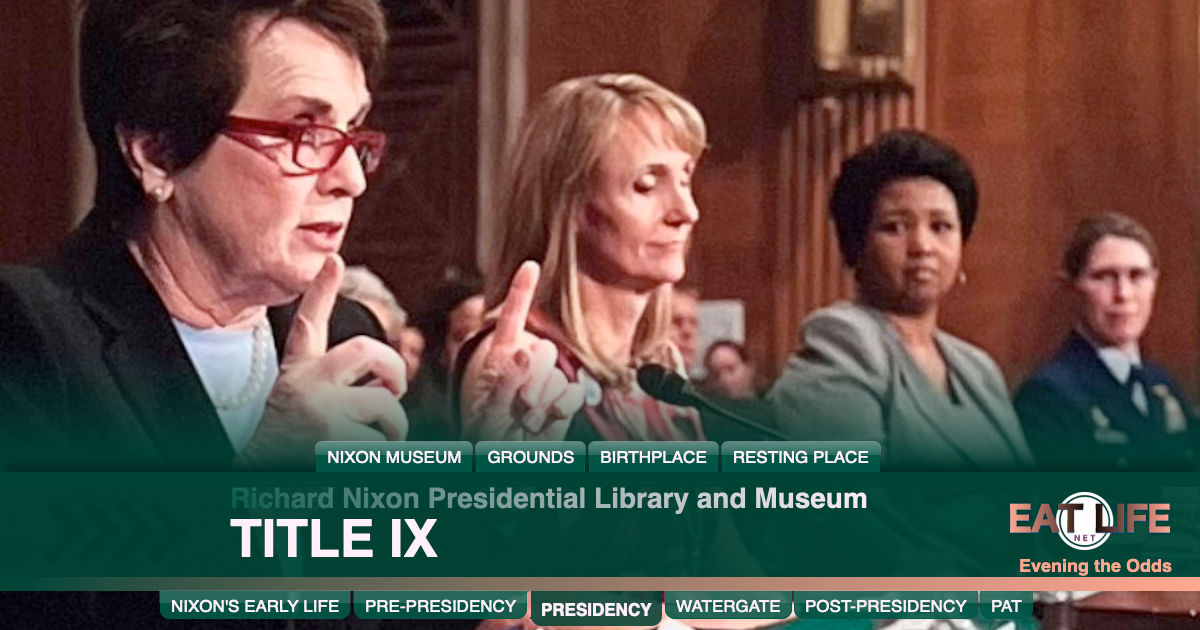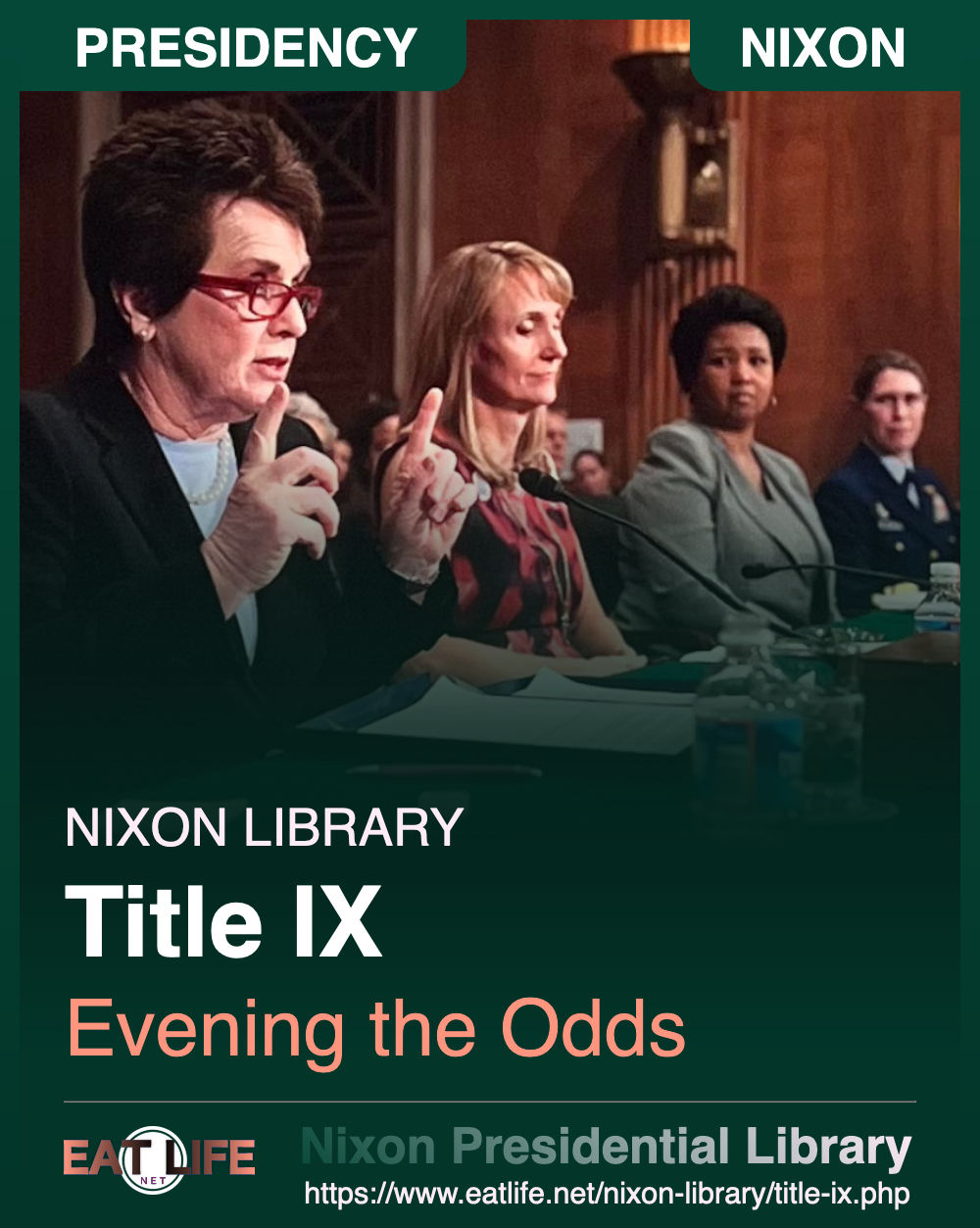The 1960s were a time of massive change
- The Civil Rights and Voting Rights Acts were implemented
- A U.S. President, an attorney general, and a beloved civil rights leader were all felled by assassins' bullets
- The country was mired in a deeply unpopular war in Vietnam
- The Space Race against the Soviet Union was on the mind of every American
Amidst all this, the groundswell movement known as second-wave feminism was coming of age and would redefine everything from the kitchen to the workplace. The time, women would argue, was now.
... As I see it, women now are coming into their own. and if they play it right and if the rest of the country has the good sense to give them the opportunity, we're going to be a stronger, more effective democratic country than we would be otherwise.
President Nixon had always been surrounded by strong women - his mother, Hannah Nixon, worked alongside his father in the family grocery in the 1920s and 1930s, and his wife, Pat Nixon, was well known to be a self-made woman. But of the 200 federal appointments President Nixon had made by the second month of his presidency, only three had gone to women.
And so began a movement to place women where they could best make a difference for women all over the United States: in the federal government. The Task Force for Women's Rights and Responsibilities was convened in September 1969.
The members of the task force comprised scholars, administration members, and members of corporate America. They would recommend five key actions. The road to achieving them would indicate how far the nation's federal government still had to go in order to achieve equity - but it would also be a cause for celebration and a roadmap to future progress.
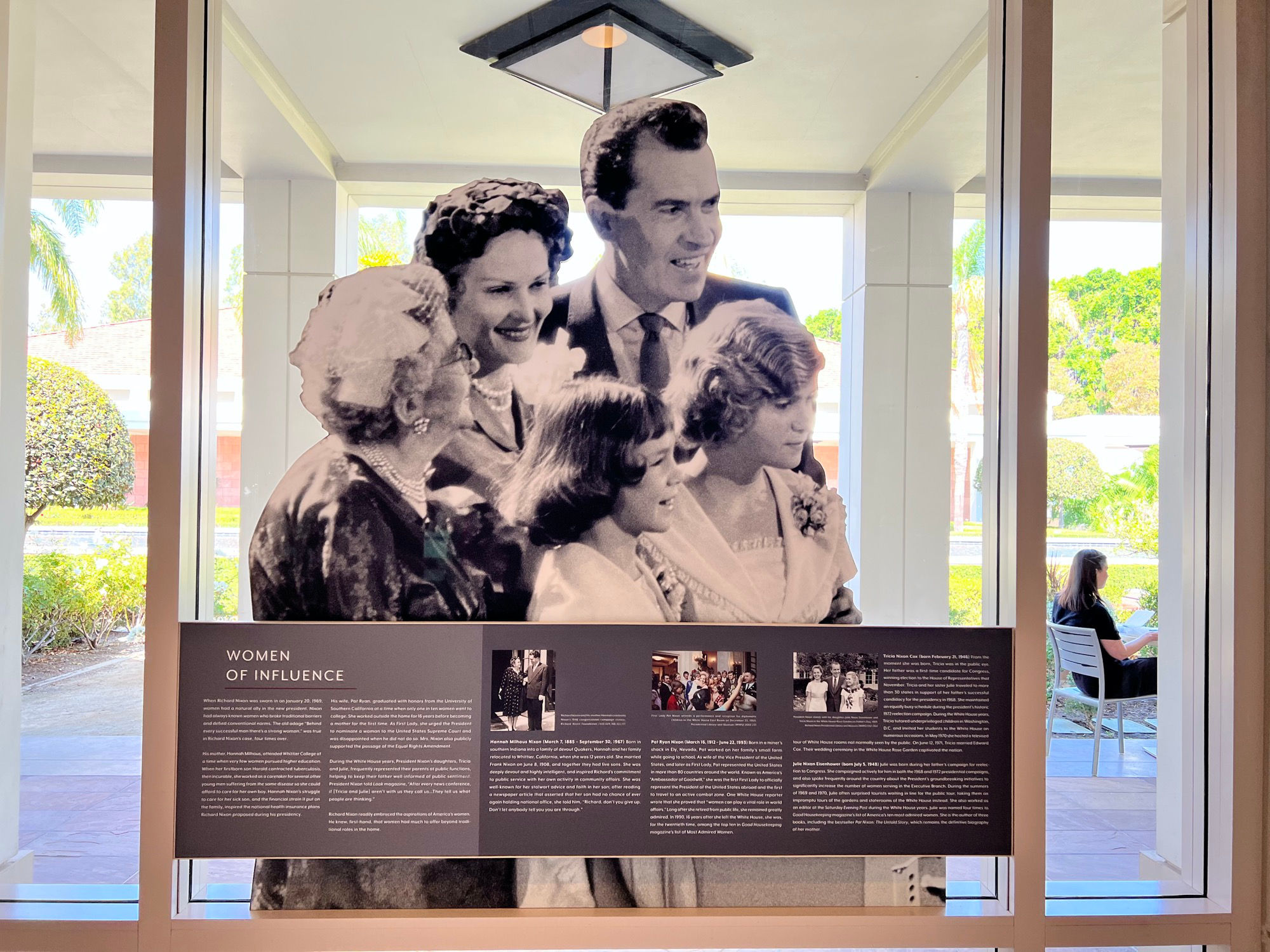
When Richard Nixon was sworn in on January 20, 1969, women had a natural ally in the new president. Nixon had always known women who broke traditional barriers and defied conventional norms. The old adage "Behind every successful man there's a strong woman," was true in Richard Nixon's case, four times over.
- His mother, Hannah Milhous, attended Whittier College at a time when very few women pursued higher education. When her firstborn son Harold contracted tuberculosis, then incurable, she worked as a caretaker for several other young men suffering from the same disease so she could afford to core for her own boy. Hannah Nixon's struggle to care for her sick son, and the financial strain it put on the family, inspired the national health insurance plans Richard Nixon proposed during his presidency.
- His wife, Pat Ryan, graduated with honors from the University of Southern California at a time when only one in ten women went to college. She worked outside the home for 16 years before becoming a mother for the first time. As First Lady, she urged the President to nominate a woman to the United States Supreme Court and was disappointed when he did not do so. Mrs. Nixon also publicly supported the passage of the Equal Rights Amendment.
- His Daughters. During the White House years, President Nixon's daughters, Tricia and Julie, frequently represented their parents at public functions, helping to keep their father well informed of public sentiment. President Nixon told Look magazine. "After every news conference, if Tricia and Julie aren't with us they call us ... They tell us what people are thinking."
Richard Nixon readily embraced the aspirations of America's women. He knew, first hand, that women had much to offer beyond traditional roles in the home.
Richard, don't you give up. Don't let anybody tell you you are through.
Tricia and her sister Julie traveled to more than 30 states in support of her father's successful candidacy for the presidency in 1968. She maintained an equally busy schedule during the president's historic 1972 reelection campaign. During the While House years, Tricia tutored underprivileged children in Washington D.C. and invited her students to the White House on numerous occasions. In May 1970 she hosted a televised tour of the White House rooms not normally seen by the public. On June 12, 1971, Tricia married Edward Cox. Their wedding ceremony in the White House Rose Garden captivated the nation.
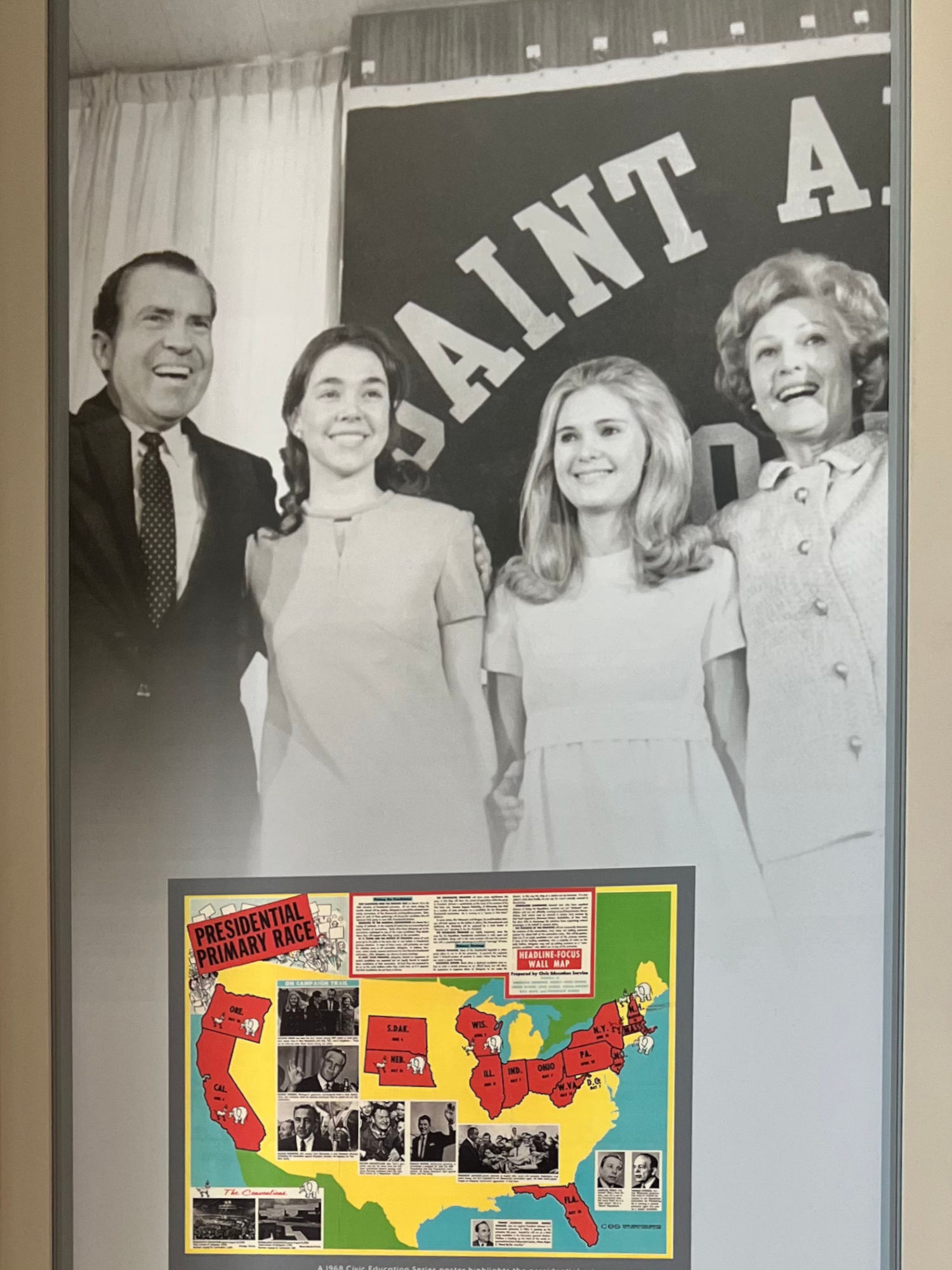
Over the 1968 presidential election, Richard Nixon was the only candidate to be pictured with his wife and daughters on the campaign trail.
When Richard Nixon launched his first political campaign, running for Congress from California's 12th Congressional District in 1946, Pat Nixon was, in her husband's words, "my best helper."
Very soon after Tricia was born on February 22, 1946, Pat volunteered her time for typing press releases, mailing pamphlets, and keeping track of my schedule. She went to many of the house meetings with me and afterward gave thoughtful, and sometimes quite persistent critiques of my performances.
Pat Nixon
Mrs. Nixon would play an integral role in every one of her husband's campaigns and during his service as a Congressman, Senator, Vice President, and President.
During the vice-presidential years (1953 to 1961) Pat traveled to 53 countries with her husband.
Rather than attend diplomatic teas and tour museums, she insisted on meeting the people of each country, visiting children in orphanages, hospital patients, and students in local schools.
By the time her husband ran for the presidency in 1960, Pat Nixon was so popular that "Pat for First Lady" buttons and bumper stickers were a common sight on the campaign trail.
Tricia and Julie
Eight years later, as Nixon launched his second run for the White House in what would come to be called "The Greatest Comeback," Pat was not the only Nixon woman campaigning for the future president.
Daughters Tricia and Julie, now young women, also played an active role.
They stumped for their father across the country and gave countless interviews, racking up thousands of miles and shaking many more thousands of hands on the road to victory.
While every woman may not want a career outside the home, every woman should have the freedom to choose whatever career she wishes and an equal chance to pursue it.
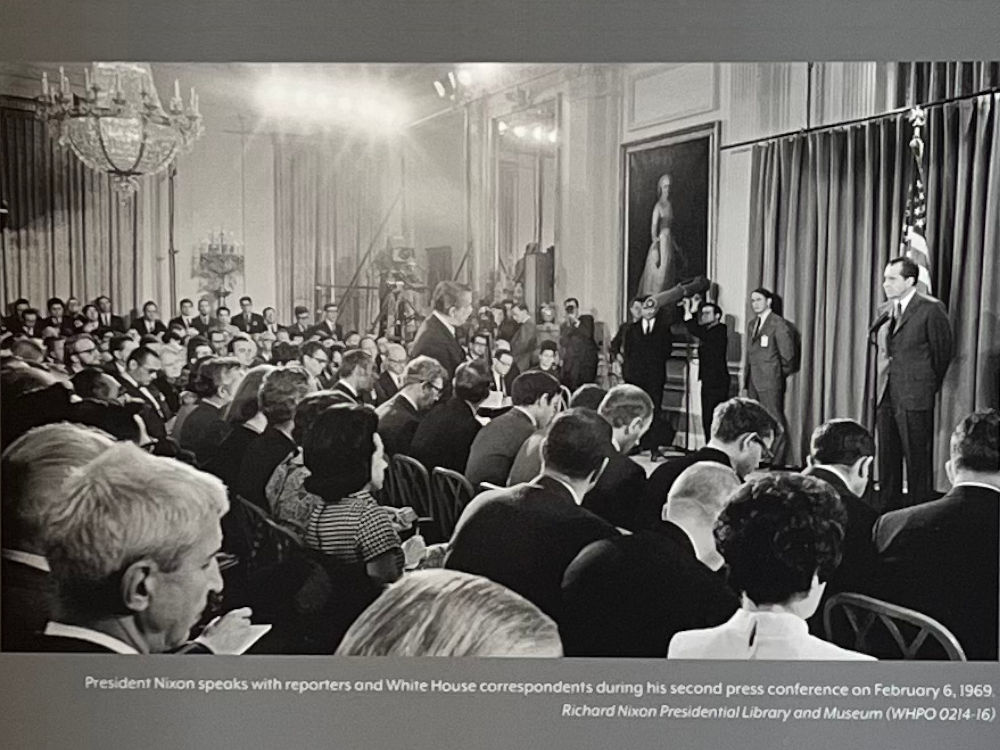
It was only seventeen days into Richard Nixon's presidency. But Vera Glaser, a reporter for the North American Newspaper Alliance, had just asked a question that would change the course of women's rights.
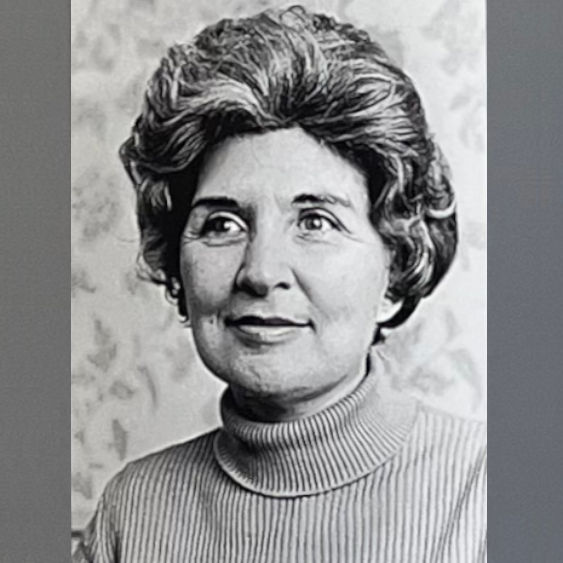 "Mr. President, in staffing your administration, you have so far made about 200 high level Cabinet and other policy position appointments, and of these only three have gone to women.
Can you tell us, sir, whether we can expect a more equitable recognition of women's abilities, or are we going to remain a lost sex?"
"Mr. President, in staffing your administration, you have so far made about 200 high level Cabinet and other policy position appointments, and of these only three have gone to women.
Can you tell us, sir, whether we can expect a more equitable recognition of women's abilities, or are we going to remain a lost sex?"
Would this be an administration that could help achieve equity?
Against the backdrop of The Feminine Mystique and the formation of the National Organization for Women, the traditional role of women was rapidly evolving.
President Nixon created a task force that would recommend just what should be done in order to address the imbalance. Glaser, of course, would serve on it.
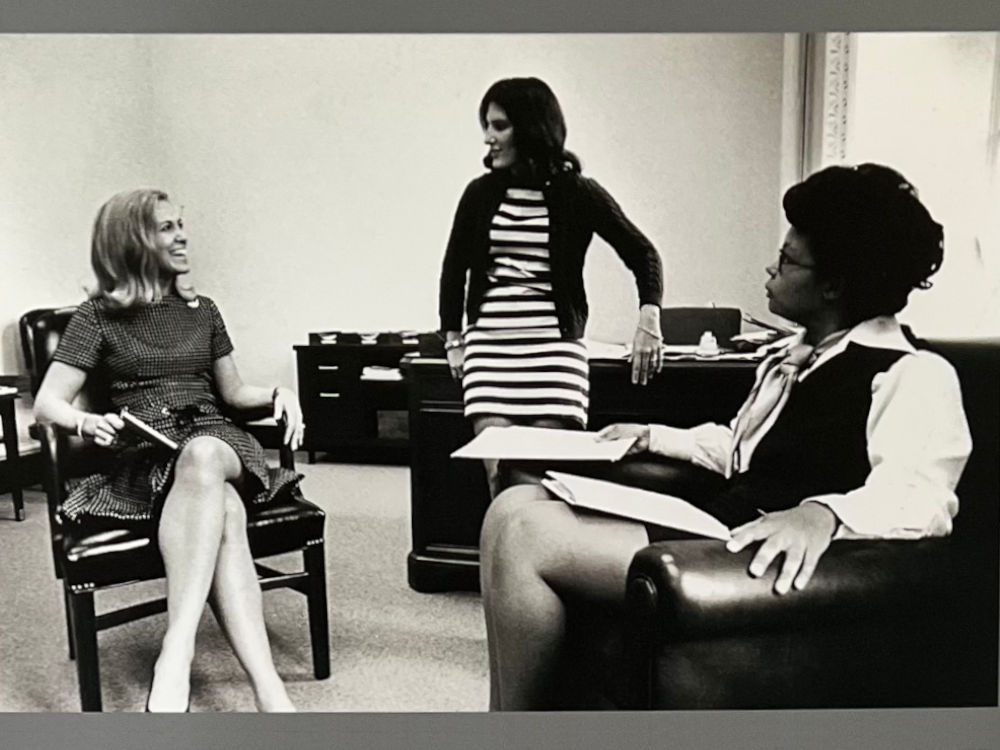
The President's task force was announced in October 1969; by December, it had issued a 33 page report with five key recommendations to change the course of women's rights and employment in the United States, beginning at the federal level. The report asked, in part, that
- The White House seek legal redress for cases of sexual discrimination
- The White House appoints more women to jobs within the federal government
- The White House creates an office specifically to handle the rights of women
Barbara Hackman Franklin, one of the first-ever female graduates of Harvard Business School and an executive at Citibank, was tapped by Fred Malek, Special Assistant to the President for Personnel, to lead what would be the first-ever concerted effort to put women on an equal employment footing with men.
By April of 1972, the number of women placed in policy-making decisions had nearly tripled, and nearly 1,000 women had been promoted into or recruited for mid-level government jobs. The government was now out-performing the private sector in hiring women. The Nixon administration's innovation resulted in the first female FBI agents and the first female Secret Service agents. (The lack of the latter was remarked upon by Pat Nixon; it's thought that this remark gave rise to the initial idea.)
As a direct result of the task force's work, women were suggested for the first-ever female Supreme Court Justice, and the number of women in the military ranks grew as the first women general officers, flag officers, and sky marshals were appointed. It was, says Franklin, the beginning of a tidal wave on which no one could turn their backs.
Franklin also knew the value of networking and community could never be overstated, and she began convening meetings of women appointees interested in advancing the cause of women within the federal government. That network became the nonprofit group Executive Women in Government, which is still in existence today and works to "prepare, promote, and support women for executive positions in the Federal Government and the Military."
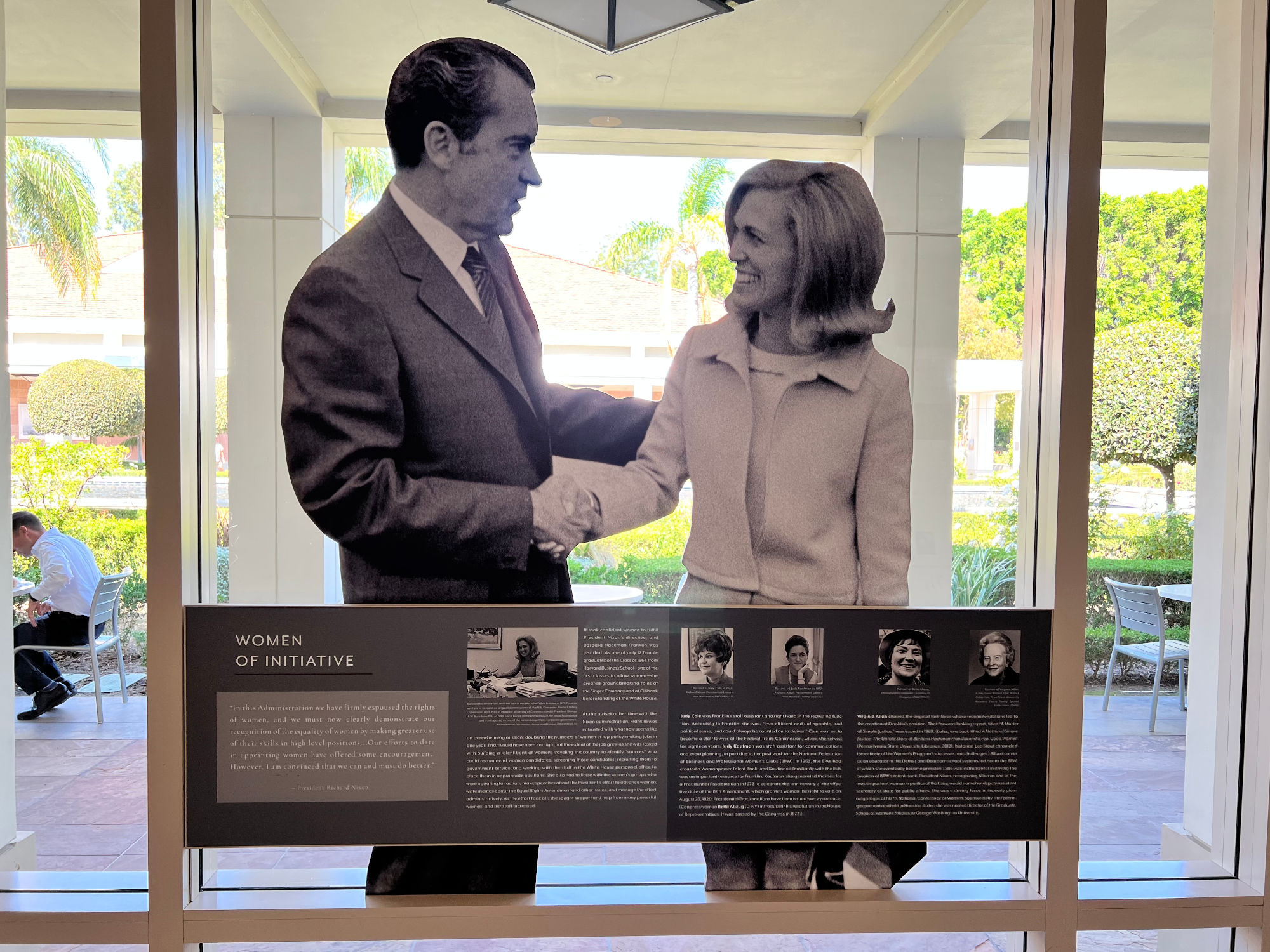
In this Administration we have firmly espoused the rights of women, and we must now clearly demonstrate our recognition of the equality of women by making greater use of their skills in high level positions ... Our efforts to date in appointing women have offered some encouragement. However, I am convinced that we can and must do better.
| WOMEN OF INITIATIVE: | |
|---|---|
| Barbara Hackman Franklin |
It took confident women to fulfill President Nixon's directive and Barbara Hackman Franklin was just that. As one of only 12 female graduates of the Class of 1964 from Harvard Business School - one of the first classes to allow women - she created groundbreaking roles at the Singer Company and at Citibank before landing at the White House.
At the outset of her time with the Nixon administration, Franklin was entrusted with what now seems like an overwhelming mission: doubling the numbers of women in top policy-making jobs in one year. That would have been enough, but the extent of the job grew as she was tasked with building a talent bank of women; traveling the country to identify "sources" who could recommend women candidates, screening those candidates: recruiting them to government service, and working with the staff in the White House personnel office to place them in appropriate positions. She also had to liaise with the women's groups who were agitating for action, make speeches about the President's effort to advance women, write memos about the Equal Rights Amendment and other issues, and manage the effort administratively. As the effort took off, she sought support and help from many powerful women, and her staff increased. |
| Judy Cole | Franklin's staff assistant and right hand in the recruiting function. According to Franklin, she was "ever efficient and unflappable, had political sense, and could always be counted on to deliver." Cole went on to become a staff lawyer at the Federal Trade Commission, where she served for eighteen years. |
| Judy Kaufman | A staff assistant for communications and event planning, in part due to her past work for the National Federation of Business and Professional Women's Clubs. In 1963, the BPW had created a Woman power Talent Bank, and Kaufman's familiarity with the lists was an important resource for Franklin. Kaufman also generated the idea for a Presidential Proclamation in 1972 to celebrate the anniversary of the effective date of the 19th Amendment, which granted women the right to vote on August 26, 1920. Presidential Proclamations have beer issued every year since. Congresswoman Bella Abzug (D NY) introduced this resolution in the House of Representatives. Ii was passed by the Congress in 1973. |
| Virginia Allan | Chaired the original task force whose recommendations led to the creation at Franklin's position. That forward looking report, titled "A Matter of Simple justice," was issued in 1969, later, in a book titled A Matter of Simple Justice: The Untold Story of Barbara Hackman Franklin historian Lee Stout chronicled the entirety of the Women's Program successes and challenges. Allan's career as an educator in the Detroit and Dearborn school systems led her to the BPW, of which she eventually became president. She was instrumental in driving the creation of BPW's talent bank. President Nixon, recognizing Allan as one of the most important women in politics of that day, would name her deputy assistant secretary of state for public affairs. She was a driving force in the early planning stages of 1977,s National Conference of Women, sponsored by the federal government and held in Houston. Later she was named director of the Graduate School of Women's Studies at George Washington University. |
| WOMEN OF INITIATIVE: | |
|---|---|
| The women in the Nixon administration whose lives were changed by the Women's Program weren't the type to stop there. Many of them went on to change the trajectory of other women's lives, whether through continued work in government or in the private or nonprofit sectors. The impact of their lives and work is felt even today. | |
| Helen Delich Bentley | President Nixon's first high level appointee and the first ever female chairperson of the Federal Maritime Commission. She was appointed by President Nixon in 1969 after initially being approached to serve as a member of the Commission. But Bentley was by for the most qualified person to serve as chair, having covered the industry as a journalist for years. "You con quote me," she said to Representative Margaret Heckler (R-MA) who was helping her to secure the nomination. "I'm holding. The chairmanship or nothing." The resulting battle to confirm her would underscore the need for equity in government. Bentley was later elected to represent Maryland in the House of Representatives from 1985 to 1995. She is on inductee of the Maritime international Hall of Fame. |
| Elizabeth Dole | She said that her parents provided "every sort of support and love and yet had no idea of a career in my future. They assumed for me marriage and settling down raising a family." But Dole's education at Duke University planted the desire to advance policy by serving in government. Dole was deputy of the White House Office of Consumer Affairs under Virginia Knauer. Together, they launched Executive Women in Government, a mentorship group. President Nixon nominated her to the Federal Trade Commission and President Ronald Reagan named her U.S. Secretary of Transportation, where she served from 1983 to 1987. She was U.S. Secretary of Labor from 1989 to 1990, and served as a United States Senator (R-NC) from 2003 until 2009. |
| Jeanne Holm | She was the first woman Major General in the United States armed forces. In 1948 she become one of the first women to serve in the Air Force. She worked to open the Reserve Officers' Training Corps to women, and fought to see that military policies were fair to women. Holm was also the first chairman of Executive Women in Government. "It's one thing to be the senior woman in an organization," She said. "It's another thing to know that there are others who are also the first women in these kinds of jobs." |
| Sallyanne Payton | She was recruited to work for President Nixon's new Domestic Policy Council in 1971. Payton noted that "Barbara was running her own operation, of course, but she could call on me ... I am African American, you understand, so I am thinking race rather than gender most of the time. It was Barbara who introduced me to gender issues and persuaded me of the rightness of the Equal Rights Act and the importance of promoting women." Payton would go on to be named chief counsel for the Urban Mass Transportation Administration of the U.S. Department of Transportation, and later an adviser to the Clinton Health Care Reform Task Force. |
| Evelyn Cunningham | She wrote for the Pittsburgh Courier, then America's largest newspaper for the black community. She covered civil rights issues and later advocated for women in her capacity as special aide to New York Governor Nelson Rockefeller. In 2002, Mayor Michael Bloomberg appointed Cunningham to a New York City commission on women's Issues. Cunningham's willingness to join the fight for equality may owe something to her experience with marriage. At 82 years old, she said, "Each one of my husbands tried to diminish my independence and my work. They all loved me most while I was cooking - and I am not a good cook." |
| Pat Hitt | She was among the first three women appointed to a policy position in President Nixon's administration, and the highest ranking woman in President Nixon's first administration as assistant secretary for Health, Education, and Welfare. She'd been an early supporter of Nixon's campaigns and made an impression as a young mother stumping for Nixon on the campaign trail, going door to door with a sheaf of flyers and her two young boys in tow. In 1968. she became the first female national co-chair of a presidential campaign when she stepped up to lead Nixon's presidential bid. Before retiring from national politics in 1973, Hitt served as the official emissary of the President on state visits to China, Ethiopia, and South America. |
| Bobbie Kilberg | She noticed a discrepancy in American society: college educated men were hired for senior corporate functions while college educated women were hired for administrative and secretarial roles. But Kilberg also noticed that women who were lawyers in Washington, D.C. were not treated this way. "If I want to spend my career in ... the public policy arena, I need to have a law degree," she said. Kilberg started as a White House Fellow on the Nixon administration's newly-formed Domestic Council and went on to serve Presidents Gerald Ford, George H. W. Bush, and George W. Bush. She is currently the CEO of the Northern Virginia Technology Council. |
| Dixy Lee Ray | She was known for wearing knee socks and blazers, but is more importantly remembered as the first ever woman to be appointed chair of the Atomic Energy Commission. Her appointment was seminal in the success of the Nixon administration's Women's Program. Franklin's method of recruiting Ray was indicative of her pro-activeness placing women in positions previously occupied by men. Ray later went on to serve as the 17th Governor of the state of Washington, another position only ever previously been held by men. |
When you're something different in a place, it really helps to have someone decode what the culture is.
| ALLIES OF THE CAUSE: | |
|---|---|
| Women working in the federal government of the late 1960s and early 1970s were fully aware that they were operating in, as Barbara Hackman Franklin put it, "a white man's world." The Women's Program helped to re-balance the scales and advance the cause nationally for women's rights and it did so with the aid of powerful allies within the Nixon administration as well as Congress. | |
| Birch Evans Bayh, Jr. | Senator Bayh, (D-IN) is known as the Father of Title IX for his co-authorship of the law that would eventually grant women and girls the right to participate in school athletics. He also wrote the Equal Rights Amendment; his authorship allowed the ERA to pass Congress in 1972. He represented Indiana in the U.S. Senate from 1963 to 1981 and, other than the Founding Fathers, is the only person to have authored two amendments to the Constitution. |
| Fred Malek | He was the Special Assistant to the President for Personnel. Malek had oversight of the Women's Program, and he recalled that he already knew who should run it. Malek and Franklin had attended Harvard together. "I sat back and said I know just the person for this job. Franklin was ... a go-getter, who could adopt to this kind of environment and do a good job." Malek said, "I would be lucky it I could get her." Malek's workload would depend on the Women's Programs success. President Nixon's memo to the heads of all Executive branch departments and agencies noted, "I hove asked my Special Assistant, Fred Malek, to meet with each of you individually to review further the requirements of this project and to offer his assistance in locating highly qualified women for top positions." Throughout the life of the Women's Program, Malek worked closely with Franklin's office to implement their initiatives. Malek went on to become president of Marriott Hotels and Northwest Airlines, and chairman of Thayer Capital Partners. He was one of the most celebrated businessmen in the United States. |
| Hobart Taylor, Jr. | He served in President Johnson's administration as counsel to the President and counselor to what would become the Equal Employment Opportunities Commission. At the time he was one of the highest-ranking black Americans in the Nixon administration. "He would not have had to reach out to me at all ... but he introduced himself and said, I did something similar ... trying to bring more African-Americans into the Nixon administration. I think I can help you," said Barbara Hackman Franklin. "What he knew was how the white man's world worked, and that helped me." |
| Robert "Bob" Finch | He was on early champion of the Women's Program. An unsung hero of the cause, Finch was counselor to President Nixon from 1970 to 1972, and he served as Secretary of Health, Education, and Welfare in 1969. In discussing Finch's advocacy of and intercession on behalf of the Women's Program with the President, Barbara Hackman Frankin said, "I cannot overstate the importance of his role." Finch's early memorandum to President Nixon detailed a step-by step process to achieve equity within the federal government, and become a blueprint for the Women's Program and its eventual success. |
| Daniel Patrick "Pat" Moynihan | He was uniquely positioned as an academic who had served Presidents Kennedy and Johnson before arriving in President Nixon's administration as executive secretary to the council of Urban Affairs. He was a well known sociologist, and his memo to President Nixon relaying his thoughts and findings on women and their deserved place in the American workforce would help galvanize the administration to take action. In part, he wrote, "We have educated women for equality in America, but have not really given it to them." He went on to note that there could well be "more women in the Marine Corps than on university faculties ... Higher education thus subtly perpetuates the notion that women have equal rights, but not equal potentialities, etc." Moynihan would serve four Presidents before being elected to the United States Senate (D-NY), where he served until 2001. |
There still exist elusive prejudices born of mores and customs that stand in the way of progress for women. We must do all that we can to overcome these barriers against what is fair and right. For the cause of equal rights and opportunities for women is inseparable from the cause of human dignity and equal justice for all.
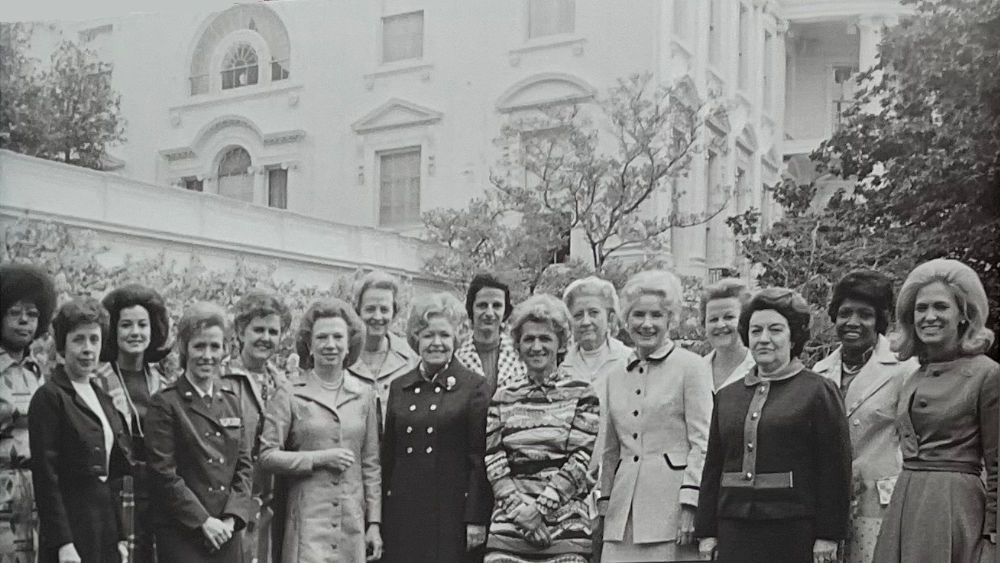
The White House lawn on April 28, 1972
From left to right: Sallyanne Payton, Ethel Walsh, Elizabeth Honford, Jeanne Holm, Georgiano Sheldon, Rose Mary Woods, Virginia Allon, Virginia Knouer, Carol Khosrovi, Helen Delich Beniley, Paula Tennant, Jayne Spain, Brereton Sturtevant, Evelyn Eppley, Gloria Toote, and Barbara Hackman Franklin

- President Nixon speaks with Civil Service Commissioner Jayne Spain and Health, Education, and Welfare Assistant Secretary Pat Hitt.
The Justice Department announced that it had, for the first time, filed suit on the basis of sexual discrimination.
The first-ever Women's Equality Day was celebrated on the 50th anniversary of the day women secured the right to vote.
The Women's Program had reached, and even exceeded, its goals. The number of women hired into high level government jobs had more than tripled and 1,000 women had been promoted or recruited into mid-level positions. But there was still much broader work to be done.
President Nixon signed the Education Amendments Act of 1972, which included Title IX, prohibiting sexual discrimination in any institution receiving federal funding. Today, it is best known as the amendment that grants women and girls the right to participate in high school and college athletics.
Other than the constitutional right to vote, possibly no other piece of legislation has had a greater effect on women's lives than Title IX."
- Nancy Hogshead-Makar, Triple Gold Medalist in Swimming, 1984 Los Angeles Olympics
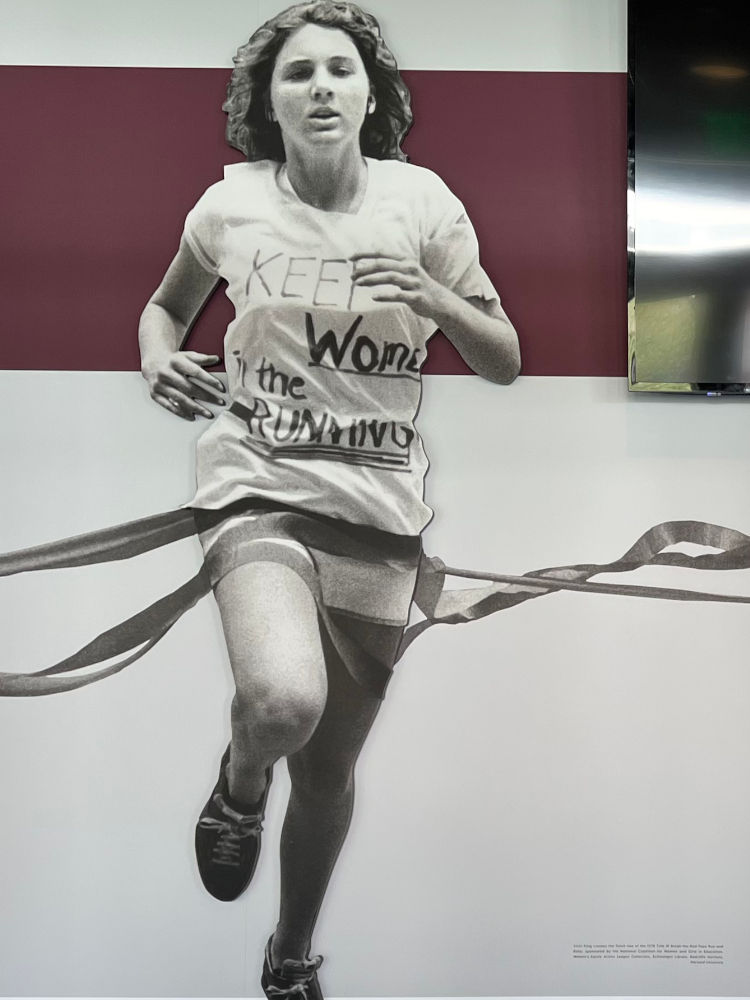
Today, eight times as many young women are participating in college athletics than in 1972. In America's high schools, more than 2.6 million young women are participating in sports, nine times as many as in 1972.
Watching eight-year-old girls round the bases on a softball field, or tuning in to cheer on Team USA in the Women's World Cup, Americans see the legacy of Title IX playing out before them on a daily basis.
No person in the United States shall, on the basis of sex, be excluded from participation in, be denied the benefits of, or be subjected to discrimination under any education program or activity receiving Federal financial assistance.
Title IX is, effectively, an amendment to the Civil Rights Act of 1964. While the Civil Rights Act ended discrimination in places of employment and public accommodation, it did not include institutions that might receive federal funding. And although Title VI o the original act did cover discrimination in these institutions, it left out sex as a potential discriminator.
Title IX was originally intended to rectify discrimination in higher education, but it quickly became known as the act that would help to equalize athletics. Two researchers at Brooklyn College have continuously studied Title IX's effects on intercollegiate athletics since 1977; their latest update, in 2014 found that participation opportunities, assistant coaching opportunities, and athletic training employment opportunities for women were all at their highest ever.
Title IX isn't just about equality in sports; the amendment covers all aspects of a federally funded institution's operations, and therefore has also been leveraged in matters of sexual assault and harassment. In 1970, a group of Yale students and one faculty member cited Title IX as the basis for a lawsuit alleging that sexual harassment is sexual discrimination. As a result of the suit, many U.S. universities instituted grievance processes for sexual harassment. (In 1986, another lawsuit recognized sexual harassment in the workplace as a violation of Title VII of the Civil Rights Act.)
| TITLE IV: | |
|---|---|
| In 2002, Title IX was renamed the Patsy T. Mink Equal Opportunity in Education Act. | |
| Patsy Mink | Representative Patsy Mink (D-HI) worked with Senator Birch Bayh (D-IN) to pen the draft of Title IX, Mink was the first woman of color and first Asian-American woman to be elected to Congress. (She served twice, from 1975 to 1977, and from 1990 until her death in 2002.) |
It may have been a tennis match, but, to me, it was about social change.
Riggs declared, "I'm out to prove that a guy 55 years old, with one foot in the grave, can play with the best woman in the world and maybe beat her. It'll be a big boost for men's superiority."
On September 20, 1973, in front of a crowd of 30,000 at the Houston Astrodome and another 90 million people watching on television around the world, King easily defeated Riggs in three sets.
After the match, King said, "I thought it would set us back 50 years if i didn't win that match. It would ruin the women's tennis tour and affect all women's self-esteem." Riggs simply said, "People said I was tanking, but Billie Jean beat me fair and square."
The King-Riggs match was to women's sports and society's view of women as Jackie Robinson's breaking of the color barrier in baseball was to race relations and civil rights.
- Temple University professor Larry Atkins

- Billie Jean King testifies before Congress on June 19, 2012, commemorating the fortieth anniversary of the passage of Title IX.
| TENNIS: | |
|---|---|
| Changing the Game: Equality for Women in Sports | |
| Billie Jean King | King continues to be one of the most effective and energetic advocates for equality for women in sports. A year after Title IX was enacted, she successfully advocated for equal prize money for men and women at the U.S. Open. That same year, she was a founder of the Women's Tennis Association and served as its first president. She has leveraged the public acclaim she achieved on the tennis court to advance equality for women in every sector of society. King is also founder of the Women's Sports Foundation, which advocates for equality in sport, and is a recipient of the Presidential Medal of Freedom. |

Girls should have every opportunity to compete and develop as boys
| WOMEN'S SOCCER: | |
|---|---|
| Changing the Game Title IX is directly responsible for the explosive growth in soccer participation among girls and young women in the United States. In 1972, jus t700 girls in the United States played high school soccer. Today more than 394,000 young women are on high school soccer teams. Title IX has helped transform women's soccer in the United States into an international powerhouse. | |
| Mia Hamm |
Mia Hamm was born in Selma, Alabama, on March 17, 1972, the same year Title IX was enacted.
Hamm took opportunities granted by the new legislation to develop skills as a soccer player, and she is now considered one of the greatest of all time.
Hamm first joined a soccer team in Wichita Falls, Texas, at age five. At 15, she became the youngest player to play for the United States Women's National Team (USWNT). At the University of North Carolina at Chapel Hill, Hamm and her team won four consecutive NCAA women's championships. She achieved her greatest accomplishments on the soccer field in her 17 years as a member of the USWNT. During her tenure, the team won the Women's World Cup twice, in 1991 and 1999, and won two Olympic Gold medals, in 1996 at the Atlanta games and in 2004 in Athens, Greece. These victories would help to usher in a spectacular era of women's soccer in the United States. Since her retirement in 2004, Hamm has continued to encourage young women to participate in sports through the Mia Hamm Foundation, which also raises money and awareness for bone marrow and cord blood transplants. |
| Brandi Chastain | She played soccer for the USWNT from 1988 to 2004. She is perhaps best known for celebrating her 1999 World Cup winning goal as she whipped off her jersey and fell to her knees, a move commonly seen in men's soccer but never before seen in women's. Chastain was a founding member of the Women's United Soccer Association, the first league to pay women's soccer players professionally, and has been a network sportscaster. She is head coach for Bellarmine College Preparatory, and is a member of the California Hall of Fame. |
| Abby Wambach | She played for the USWNT from 2003 to 2015. She is the highest all time scorer for the national team, and holds the world record for international goals among both men and women players. She played for the United States women's Olympic team in the 2004, 2008, and 2012 winning two gold medals. Wambach retired from soccer in 2015, and has since turned her attention to advancing equity and inclusion and narrowing the pay gap between men and women. Her books Forward: A Memoir and Wolfpack are both New York Times bestsellers. |
| Alex Morgan | She is a co-captain of the USWNT as of 2020. She plays for the Orlando Pride in the National Women's Soccer League. She was named by Time magazine as America's highest paid women's soccer player. Morgan helped lead the USWNT to win the 2015 and 2019 Women's World Cups. |
| Megan Rapinoe | She is a co-captain of the USWNT as of 2020. |
Nearly 50 years after Title IX became law, a generation of women has reaped the benefits ... Title IX effectively turned the American education system into the world's mos successful women's sporting development organization.
-July 6, 2019, a reporter with the Guardian, predicting a Team USA victory the next day in the World Cup final

- Team USA waves during their 2012 Olympic medal ceremony in London
It's an incredible feeling, just in this moment you realize every single effort and every single sacrifice and so-called suffering through the years with the ups and downs was worth it.
-- Marta Karolyi, Team Coordinator, 2012 Team USA Women's Gymnastics
"The Fierce Five," as they became known, would not only grab the gold, they would also capture the hearts of their fellow Americans with their winning personalities and their camaraderie as teammates.
As the games of the XXX Olympiad unfolded, Gabby Douglas won the individual all-around gold medal, making her both the first black American gymnast to earn this medal and the first American gymnast ever to win both the ream and individual gold in the same Olympic games. Aly Raisman, the team's captain, became the first American female gymnast to bring home the gold in the floor exercise.
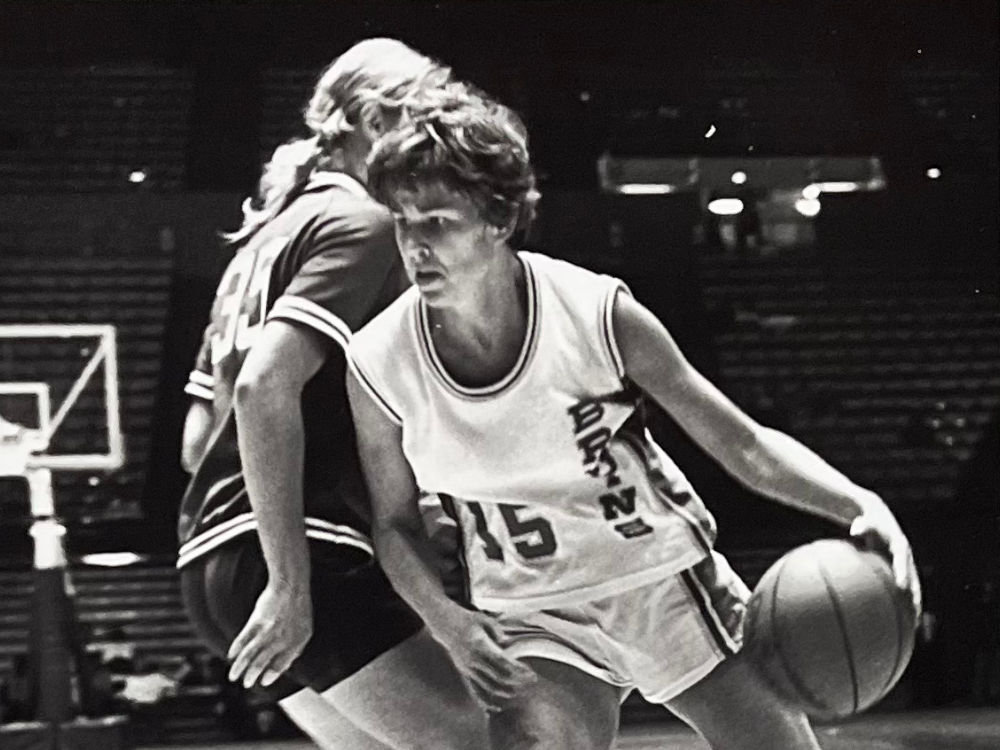
| WOMEN'S BASKETBALL: | |
|---|---|
| Changing the Game | |
| Anne Meyers Drysdale | She was the first woman to be granted a full athletic scholarship under Title IX.
She played for the UCLA Bruins throughout her college career, and then became the second woman ever to sign a contract with the NBA, although she was eventually cut from the Indiana Pacers.
Drysdale went on to an award-winning run as a professional sportscaster, and then was general manager for the WNBA's Phoenix Mercury. The team won two titles under her leadership. She was also vice president for the NBA's Phoenix Suns. Although she never played for the NBA, she called trying out for it "the best decision of my life," and in later interviews, reminded young women who were interested in working in male-dominated fields that "it may not work out the way they want it to, but it's going to lead to a lot of open doors." |
The institution of Little League is as American as the hot dog and apple pie. There is no reason why that part of Americana should be withheld from girls.
- The Honorable Sylvia Pressler
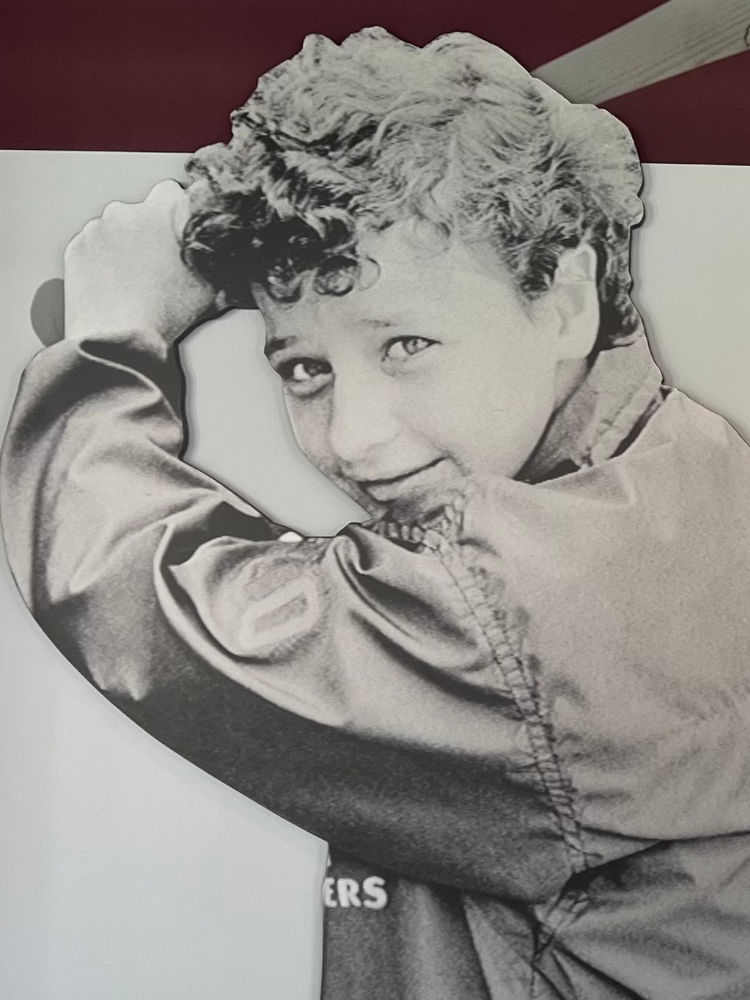
| LITTLE LEAGUE: | |
|---|---|
| Changing the Game | |
| Maria Pepe |
In the spring of 1972, Maria Pepe, a 12-year-old girl from Hoboken, New Jersey, tried out for Little League in her hometown.
She made the team, but only played in three games before she was ruled ineligible because she was a girl.
In order to preserve Hoboken's Little League charter, Pepe quit, but not before catching the attention of the National Organization for Women (NOW), which had been lobbying for passage of Title IX. With the permission of Pepe's family, NOW brought Pepe's case to the New Jersey Division of Civil Rights. Its hearing officer, Sylvia Pressler, ruled that Pepe deserved to play. Her ruling was appealed all the way to the New Jersey Supreme Court, which upheld Pressler's decision, and a year later, the national Little League organization changed its rules, giving girls equal opportunity to play. Although Title IX did not apply directly to Pepe's situation, the new law seemed to have influenced the public's attitude toward girls having equal opportunity in athletics. |
| Mo'ne Davis | The Little League's change in rules in 1974 paved the way for generations of girls, including Mo'ne Davis, a 13 year-old Little League pitcher from Philadelphia, Pennsylvania.
At the 2014 Little League World Series, Davis became a national sensation.
She look the mound for the Taney Dragons and became the first girl to win a game and the first to pitch a shutout in Little League history.
She was also the first black girl to play in a Little League World Series game.
Davis's victory unleashed a wave of attention from The media across the United States. She appeared on dozens of TV shows, was written about in countless newspapers, and become the first Little Leaguer to appear on the cover of Sports Illustrated while still playing Little League baseball. Mark Hyman, George Washington University's assistant professor of sport management, said, "She's the most talked about baseball player on earth right now." In September 2014 Davis donated her jersey to the National Baseball Hall of Fame. Several weeks later, she threw out the ceremonial first pitch ot the fourth game of the 2014 World Series in San Fransisco. After graduating from high school. Davis began college in the fail 2019 at Hampton University, an historically black university in Hampton, Virginia. She debuted as a Lady Pirate on February 8, 2020. |
It has meant a uniform and equipment for girls who want to enjoy the benefits of participating in sports. Because of Title IX, the number of girls playing sports has exponentially grown since I first tried out for Little League in 1972. I am eternally grateful for this legislation.
Writing about the long-term effect of Pepe's successful appeal to play baseball, University of Missouri law professor Douglas Abrams noted "Title IX would soon revolutionize gender roles in elementary, secondary, and higher education."
Every year, about 100,000 girls play in Little League. Since they were first allowed to play in 1974, it is estimated that five million girls have taken the field in a Little League uniform.
The full and equal participation of women is crucial to the strength of our country.
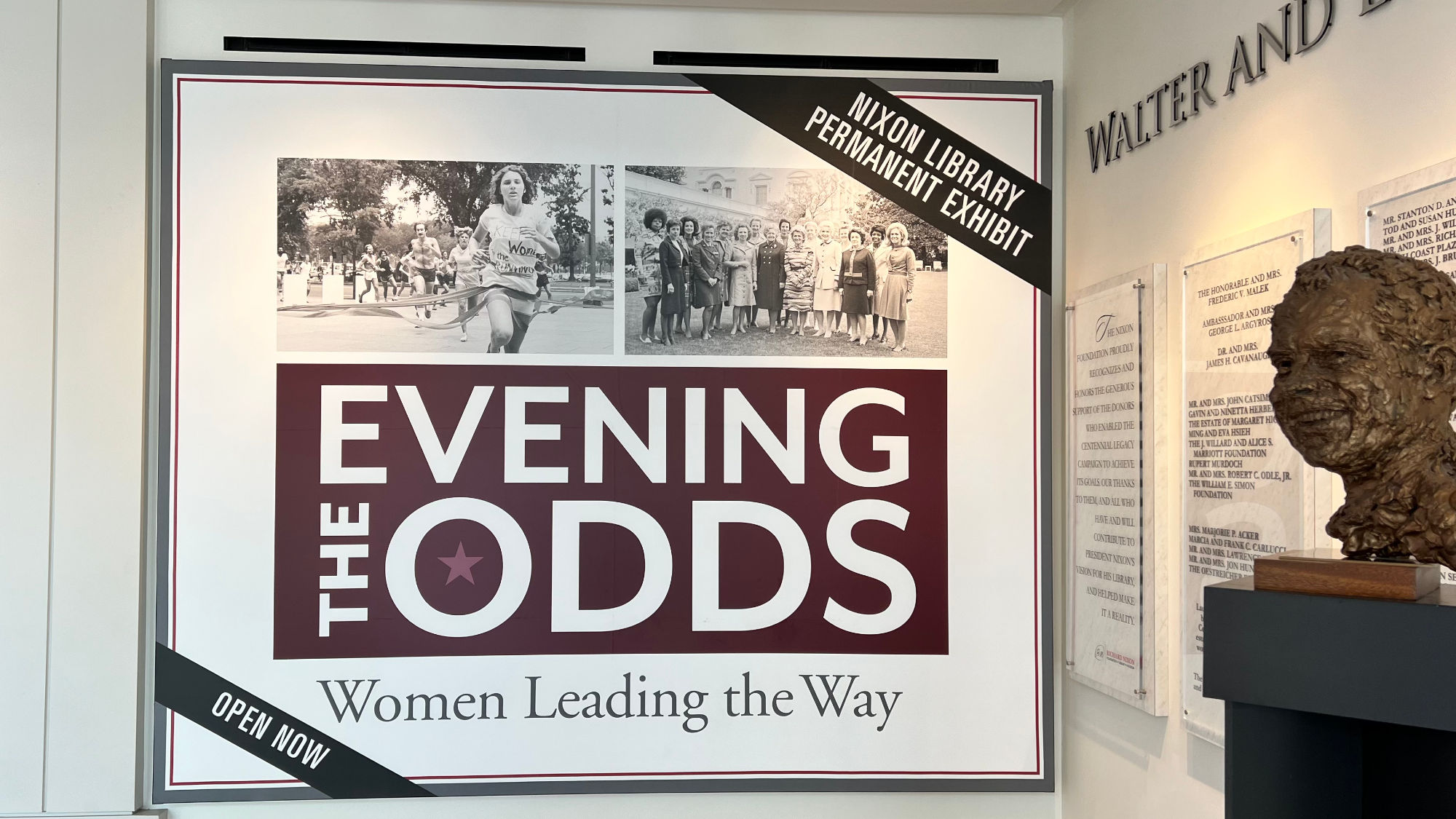
Women Leading the Way
Presented by the Richard Nixon Foundation to permanently commemorate the passage of Title IX
Exhibit Made Possible by the Generosity of
- Steven L. Craig
- Julie Nixon Eisenhower
- Hon. Barbara Hackman Franklin
- Betsy and Hugh Hewitt
With Special Thanks to our Exhibit Partners
- Mrs. Birch Bayh
- Penn State Special Collections
- Maria Pepe
- UCLA Athletics
- United States Soccer Federation
- USA Gymnastics
Design and Construction
- Bob Bostock
- Ironwood Fabrication
- YiShun Lai
- Maple & Associates, LLC




